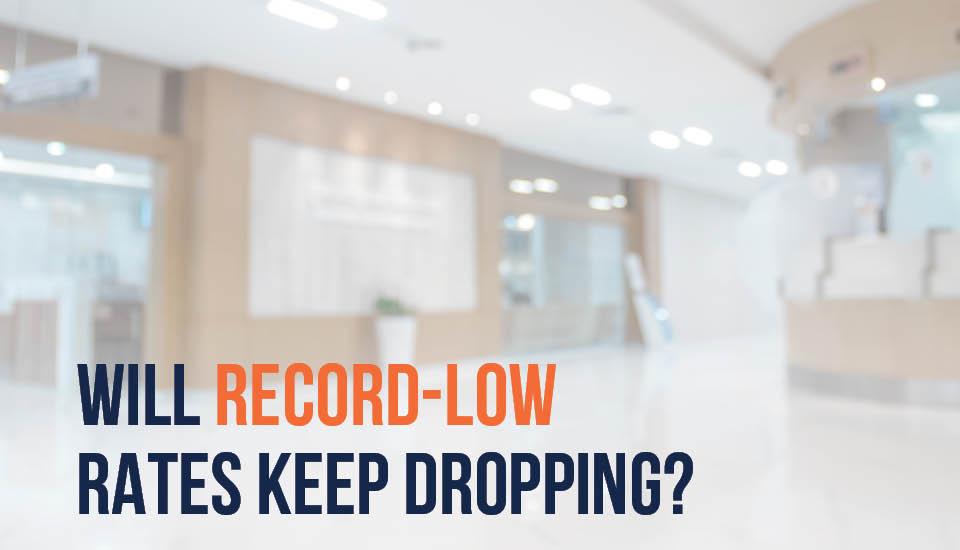In response to the economic risks of COVID-19, the Federal Reserve cut its rate by half a percentage point to 1 to 1.25 percent on March 3, 2020. This is the Federal Reserve’s first unanticipated rate cut since 2008.
The Fed’s decision appears to be a move made to catch up to the global shift — and declining mortgage rates.
On December 31, 2019, the first official case of coronavirus was detected. Mortgage rates dropped two days later. The 30-year fixed-rate decreased from 3.9 to 3.86 percent. Since then, rates have generally trended down.
Mortgage rates are known to follow the 10-year Treasury note’s yield. The 10-year just plunged to its lowest point yet as coronavirus (COVID-19) spreads, resulting in nine confirmed deaths in the U.S. so far.
Mortgage rates hit a 3-year low, with more rate drops in sight
Mortgage rates reached their lowest point in three years, sitting at 3.45 percent as of February 27, 2020. Though the Federal Reserve’s surprising rate cut isn’t expected to affect mortgage rates, financial experts believe mortgage rates aren’t done falling.
Some mortgage industry research groups say rates could potentially dip below 3 percent within weeks, creating a “once-in-a-lifetime” opportunity.
This may be related to rapidly-moving COVID-19. The coronavirus’ wide circulation has caused market experts to predict foreign real estate investments will plummet even further within the year. As for how long mortgage rates will drop before they bounce back? It largely depends on how long it takes to contain the virus.
Even amidst serious health concerns, many people in the U.S. are seeing record-low rates as an invitation to purchase or refinance:
- For today’s homebuyers. With the 10-year reaching a new bottom, homebuyers are expected to benefit from mortgage rate declines lasting for at least a few more weeks.
- For today’s homeowners. Another rate drop could create favorable conditions for refinance, potentially helping anyone with an existing mortgage.
Generally, the lower the mortgage interest rate, the lower a monthly mortgage payment will be.
So, a lower mortgage rate could allow a first-time buyer to afford a larger mortgage. Qualifying for a mortgage now can give a buyer more power — and offer more options in areas where inventory is tight. Likewise, a homeowner who refinances may leverage a lower rate to decrease their monthly payment.
Home sweet home. You can get there fast.
In the U.S., first-time buyers make up over one-third of all homebuyers. This is according to the National Association of REALTORS® January 2020 Existing Home Sales report. First-time buyers are the ones most likely to be hindered by housing inventory shortages but could benefit most from decreasing rates.
Now, homebuyers on the fence will probably purchase sooner, the National Association of Realtors’ Chief Economist Lawrence Yun explains. The early-spring housing market is getting a boost; it makes sense to act quickly and take advantage of falling rates.
While rate drops triggered by the global impact of the coronavirus may have short-term benefits for American homeowners and buyers, it’s still important to stay in-the-know to stay protected. Please read more about the coronavirus outbreak on the CDC’s website. You can also donate or give blood to support those who’ve been affected.
Lock in a lower rate and see buying power increase
With rates reaching a three-year low, there isn’t much holding homebuyers back. Prequalifying at a low rate can help you overcome any inventory hurdles, making more houses available in your new price range. Or, you could save money by refinancing at a lower rate. Take the first step and get started.
*During normal business hours.
While refinancing could make a significant difference in the amount you pay each month, there are other costs you should consider. Plus, your finance charges may be higher over the life of the loan.
For educational purposes only. Please contact your qualified professional for specific guidance.
Sources deemed reliable but not guaranteed.

